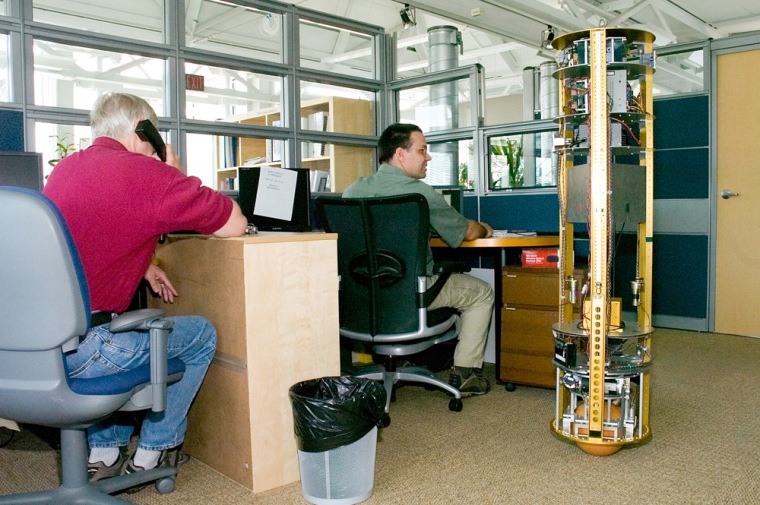Ballbot, a narrow, 5-foot-tall robot, balances delicately on what looks like a bowling ball. Swaying slightly on a laboratory floor, the aluminum-framed droid seems ready to fall at any moment.
But much like a circus animal balancing on a beach ball, Ballbot stays stable, its motors whirring to keep it upright.
Some experts say robots such as Ballbot might one day help provide care and companionship to the disabled and the nation's aging population.
"We're very good at making machines that can compute and play chess really well," said Louis Whitcomb, a professor of mechanical engineering at Johns Hopkins University. "We're very poor at developing machines with which we can interact physically, assistants that can do our bidding."
Ballbot, created by Carnegie Mellon University Professor Ralph Hollis, represents pioneering work in the emerging field of "human-centered robotics," Whitcomb said.
The field is already booming in countries like Japan and Korea, where graying populations are expected to put overwhelming demands on younger health care workers, said Roderic Grupen, director of the Laboratory for Perceptual Robotics at the University of Massachusetts, Amherst.
Robots could help fill the gap, for example, by calling for help for a patient who has fallen down and can't get up, Grupen said. A robot could also monitor the patient's vital signs until help arrives.
Unlike other robots designed to interact with humans, Ballbot is capable of moving in any direction without turning because it pivots on a ball, Grupen said. That makes it capable of operating in the tight, cluttered spaces that people often live in, he said.
Researchers are working to add arms and perhaps a vision system to Ballbot. But while the technology behind the robot is promising, Hollis said practical applications remain far off.
"We don't know whether we'll succeed or not," he said. "But we're trying to push the idea as far as we can."
